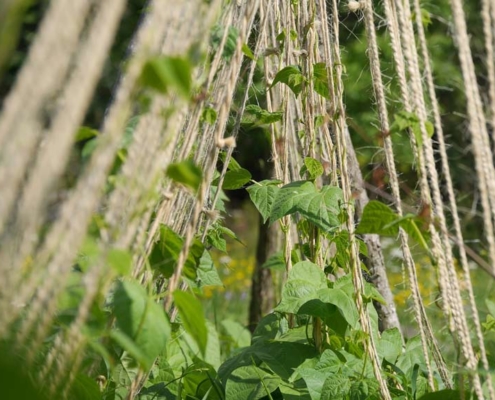Three Types of Vegetable Trellises You Can Build Yourself

Vegetable Trellises
by Sam Doll
Spring is just around the corner. That means that it is time to start getting your garden prepped for the growing season! You’re probably busy cleaning, ordering, and planning your garden before you need to worry about getting those seeds in the ground.
One DIY project you should consider is building your own vegetable trellises! Here are three types of trellises that your plants will love, and you can make yourself.
1. Teepee Trellis
This is probably the simplest and cheapest type of trellis to make yourself. All you need to make this trellis are three bamboo poles and some twine.
Using the bamboo poles, make a teepee shape and push them into the ground until they are relatively deep and stable. Then, using the twine, lash the bamboo poles together where they meet. Wind the twine around and down the structure until you reach the bottom. To secure the twine, you can twist the twine around the poles where they meet and knot it. You can also use staples or zip-ties if you want.
This type of trellis is perfect for growing climbing squash and cucumbers. We love planting our Organic Delicata Squash under these trellises. The base of each pole should be used as a planting site.
2. A-Frame Trellis
Another trellis that is perfect for your vegetable garden is an A-frame style trellis. There are many methods to building these. This is a little more involved than the Teepee trellis and will require some woodworking.
As with any garden project, we don’t recommend for splurging on the nicest wood you can find. This will be outside and exposed to the elements, so don’t get too attached to it. You can still seal or paint it to get more life out of it, but these projects won’t last forever.
For this trellis, all you need are some boards, screws or nails, hinges, and a climbing surface. Create a frame using your lumber. We like using 2X4’s because they are sturdy and easy to find, but any flat boards will work. Screw or nail the board together by putting the horizontal boards on the “inside” of the vertical boards. You can complicate this project by making the boards flush or adding other embellishments, but this is the simple and dirty version.
The final dimensions of your frames will depend on the size of your space and how tall you need the trellis to be. The important thing is to make them identical. Once you’ve assembled your frames, it’s time to attach the climbing surface. The most affordable route here would be to create a grid using twine or string and create a grid that attaches to the sides of the frame. If you have a bit more budget, we recommend a chicken wire or metal fencing that you can just staple onto the frame. This saves a lot of time and will last a little longer.
Finally, attach the two frames with the hinges and place them in your garden. These style frames are great for peas and beans. Our Mardi Gras Blend of beans are a great and colorful way to show off this project.
3. Row Cover Trellis
Many of you use row covers to get your garden through the early and late part of the season. Well, why not make a multi-functional row cover. Our version of this is rather simple. Cut even segments of a light metal fencing and make an arch out of them that covers your row or planter. Stake those into the ground and continue the length of the plot. This is a great easy trellis that can be covered with a floating row cover if needed!


Leave a Reply
Want to join the discussion?Feel free to contribute!